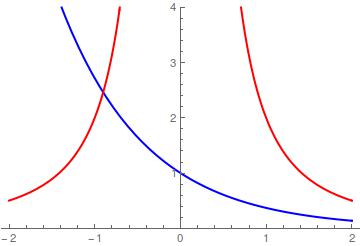y=x^2e^(-x) has a maximum turning point at A(2,4/e^2). The equation x^2e^(-x)-2=0 has 3 real, distinct roots. What are the possible values of k?
The answers say 0<k<2 , but I have no idea how to get to this.
Thanks!
The answers say
Thanks!
1 Answer
Nov 27, 2017
See below.
Explanation:
The equation
https://en.wikipedia.org/wiki/Lambert_W_function
We have
Now using the property
we have
with the only real solution
NOTE
Attached the representation of how to obtain a graphical solution as the intersection of


